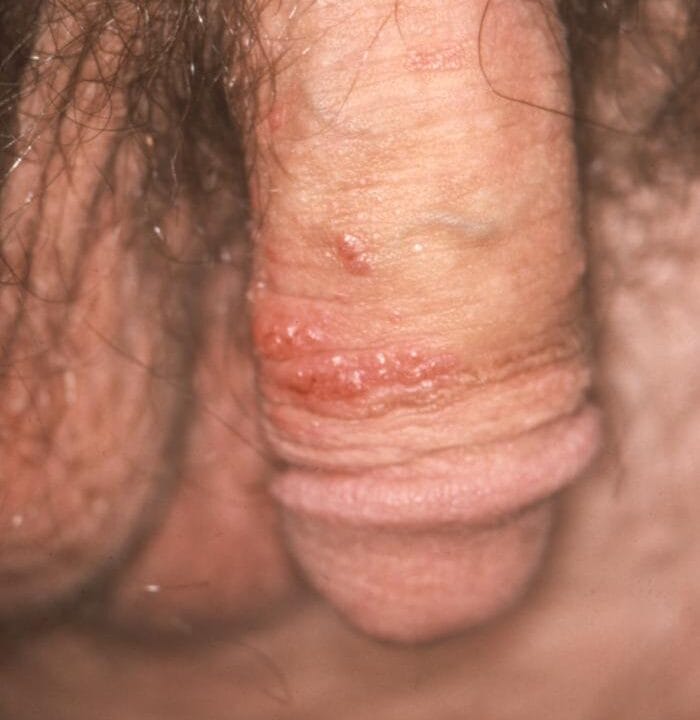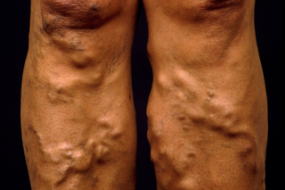
Condyloma acuminata, commonly known as genital warts, are benign epithelial tumors caused by certain strains of the human papillomavirus (HPV). They typically appear as small, flesh-colored or gray growths in the genital and anal regions.
Etiology
- Causative Agent: Human papillomavirus (HPV) is the primary cause.
- High-Risk HPV Types: Types 16 and 18 are associated with cervical and other anogenital cancers.
- Low-Risk HPV Types: Types 6 and 11 are most commonly associated with condyloma acuminata.
Epidemiology
- Prevalence: Condyloma acuminata is one of the most common sexually transmitted infections (STIs) worldwide, affecting both men and women.
- Risk Factors:
- Multiple sexual partners.
- Early age of sexual activity.
- Compromised immune system (e.g., HIV).
Pathophysiology
- HPV infects the epithelial cells of the genital area, leading to cellular proliferation and abnormal growth.
- The virus can remain dormant for extended periods, with warts potentially appearing weeks to months after exposure.
- Warts may be solitary or multiple and can vary in size and appearance, often resembling cauliflowers.
Clinical Features
- Appearance:
- Soft, flesh-colored or gray warts.
- Surface can be smooth or lobulated (cauliflower-like).
- Often painless, but may cause itching or discomfort.
- Location:
- External genitalia (vulva, vagina, penis, scrotum).
- Perianal area.
- May also occur in the oral cavity and throat with oral-genital contact.
Diagnosis
- Clinical Examination: Visual inspection is often sufficient, especially for characteristic lesions.
- Acetic Acid Application: Applying acetic acid (vinegar) can turn the warts white, aiding in diagnosis.
- Biopsy: May be performed for atypical lesions or when there is concern for malignancy.
- HPV Testing: Not routinely performed for warts, but may be indicated in cases of cervical dysplasia.
Management and Treatment
- Patient Education: Informing patients about the nature of the infection, its benign nature, potential for recurrence, and transmission prevention.
- Topical Treatments:
- Podophyllotoxin (Condylox):
- Dosage: Apply to warts twice daily for 3 days, followed by 4 days of no treatment; repeat if necessary.
- Mechanism: Acts as a cytotoxic agent, leading to wart destruction.
- Imiquimod (Aldara):
- Dosage: Apply to the affected area three times a week before bedtime; treatment can last up to 16 weeks.
- Mechanism: Stimulates the immune response to fight the virus.
- Podophyllotoxin (Condylox):
- Destructive Therapies:
- Cryotherapy: Liquid nitrogen is applied to freeze and destroy warts; may require multiple sessions.
- Electrosurgery: Uses high-frequency electric current to excise warts.
- Laser Therapy: Utilized for larger or resistant warts.
- Surgical Options:
- Excision: Surgical removal of larger or recurrent warts.
- Carbon Dioxide Laser: Effective for extensive warts that do not respond to other treatments.
Follow-Up and Monitoring
- Patients should be monitored for recurrence, which can occur in up to 30% of cases within the first 3 months after treatment.
- Regular follow-up is essential for those at risk for HPV-related cancers, particularly women who should have routine cervical screenings (Pap smears).
Prevention
- Vaccination: The HPV vaccine (Gardasil 9) protects against HPV types that cause genital warts and HPV-related cancers. It is recommended for preteens (ages 11-12) but can be given up to age 45.
- Safe Sexual Practices:
- Use of condoms can reduce the risk of transmission, although they do not eliminate the risk entirely.












